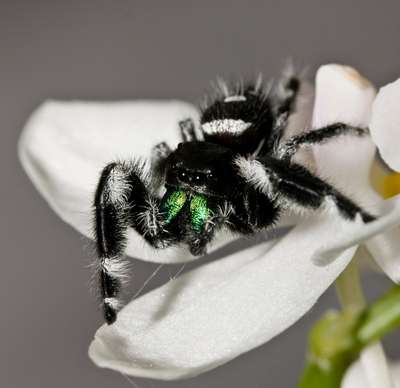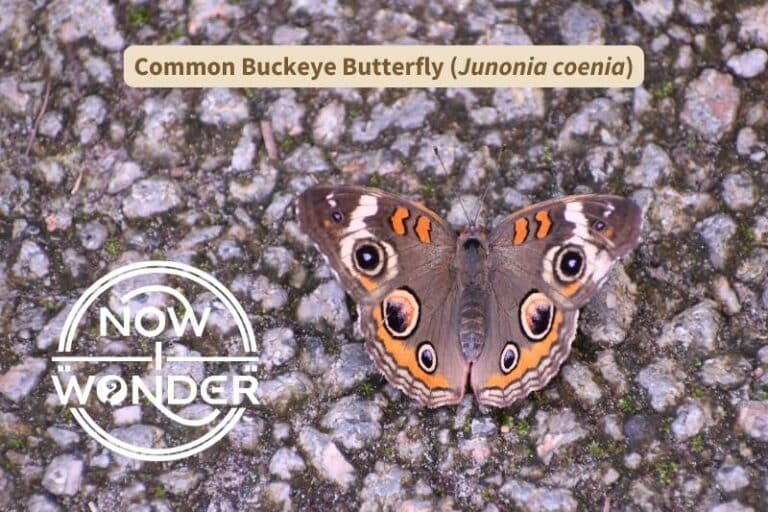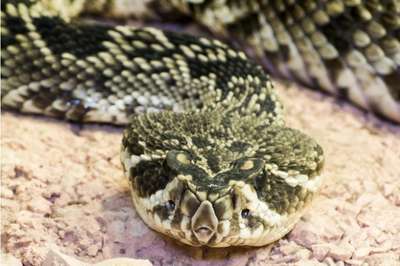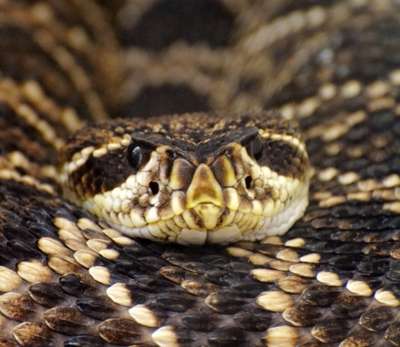Dragonflies are easy to spot during the day as they zoom around in bright sunlight. But if you’ve ever wondered what they do at night when you can’t see them anymore, you’ve come to the right place!
Dragonflies reduce their activity at night and hide from predators. They get slower and move less as the light fades and eventually perch motionless in the shelter of plants within their territories until the sun rises again.
Nighttime changes the conditions in which dragonflies live and this makes a big difference in how they behave. Here is some more information about how and why dragonflies just hang out until dawn.
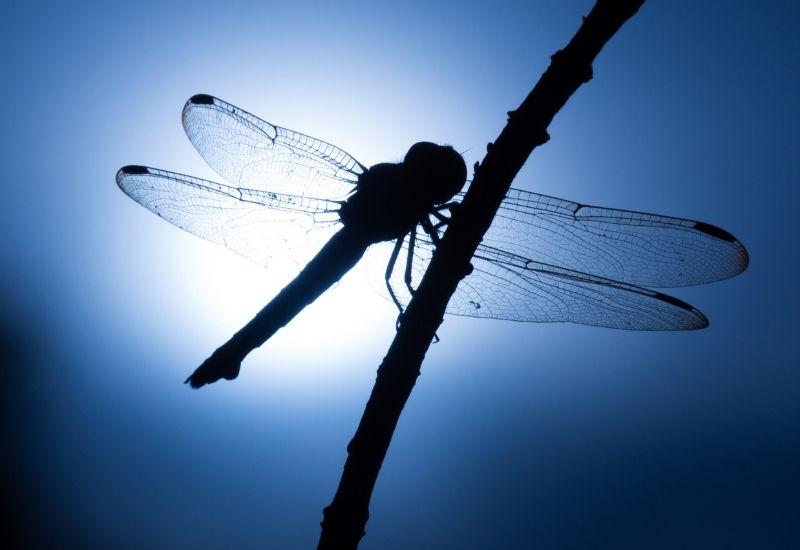
Do dragonflies sleep?
Dragonflies do “sleep” in the sense that they have cyclical patterns of reduced activity during which their bodies perform important tasks, like injury repair. Dragonflies are most active during the day, so their inactive period corresponds to the dark hours of the night, just like humans.
However, it is currently impossible to determine how equivalent dragonfly “sleep” is to human sleep.
Dragonflies don’t have eyelids to close and their eyes are fixed. Even if their brains actually progress through different sleep stages the way human brains do, they can’t demonstrate rapid eye movement (REM) so we can only guess about their sleep experience.
Also, dragonflies become lethargic as the temperature drops beyond what is comfortable for them. Therefore, it’s impossible to determine how much of a dragonfly’s stillness at night is because it’s sleeping versus a response to cooler nighttime temperatures.
Where do dragonflies sleep?
Dragonflies find sheltered spots to wait out the hours until morning. Since their mobility is reduced at night, they hide themselves as best they can under leaves, in shadows and in deep plant cover to minimize the risk of being eaten.
A dragonfly is a big insect and could be spotted easily by nocturnal predators if it stays out in the open. Since its activity level is naturally reduced at night due to normal daily rhythms, it would be slower to react to a threat and less likely to escape.
In addition, a dragonfly hides out for protection from the elements, especially rain and cold wind. As mentioned above, dragonflies become less able to fly quickly in colder temperatures. (Resh and Carde 2009) Hiding away at night is a good strategy to lessen the chances of becoming prey.
Do dragonflies fly at night?
Dragonfly vision evolved to function well in bright sunlight. Consequently, they can’t see as well in the dark. Flying at night would risk injury or being caught by an unnoticed predator. Also, flying at night would waste their energy because their insect prey is active primarily during the day.
Dragonflies see color and are fantastic at spotting motion. They rely on their excellent vision to spot prey and gauge distance when hunting during the day. This helps them not only catch food but also to avoid obstacles and spot predators that pose a danger.
During the day, a dragonfly is fast, agile and able to see its environment clearly. Darkness turns their daytime advantages into liabilities.
Adult dragonflies are focused on two main priorities during their short life: hunting and reproducing. Successful hunting gives the dragonfly the energy to grow robust enough to win a mate and reproduce.
Dragonflies are incredible predators of flying insects like mosquitoes, beetles and flies during the day. But at night, most of their prey takes cover. Resting at this time conserves the dragonfly’s energy for the next day’s hunt, when its prey becomes active and vulnerable again.
What does it mean when you see a dragonfly at night?
When startled, a dragonfly will naturally take flight. Because it sees best in daylight, it will fly towards the brightest light available, which at night could be a home’s flood light or a streetlight. Once in the sphere of artificial light, it will have a hard time getting itself out and back to safe cover in the darkness.
If you see a dragonfly flying around an artificial light at night, it is confused by the sharp contrast between the light area and the darkness beyond.
A dragonfly hunkered down on a plant at night is resting to conserve energy, hiding to avoid discovery by predators and waiting for dawn to become active again.
Seeing a dragonfly at night on the ground can mean different things. If the dragonfly is crouched upright on the ground (as opposed to perching on a plant), it has likely been disturbed out of its hiding place and now either can’t see well enough to fly itself back under cover or is too cold to summon the energy to fly.
A dragonfly upside down on the ground is either dead or very close to it, especially if the night is cool.
Dragonflies are vulnerable to temperatures that drop too quickly, too far or remain too low for too long. Like all insects, dragonflies are ectothermic, meaning that their body temperature depends on the temperature of the air around them; dragonfly metabolism slows as the temperature drops.
During the day, dragonflies can protect themselves from cool temperatures to a certain degree by orienting their bodies and wings towards the sun (known as “basking”) or vibrating their wings (known as “wing whirring). (Resh and Carde 2009)
However, at night, they can rely only on wing whirring to counteract the slowing effect of the cold temperatures and this behavior uses a huge amount of energy. A dragonfly that becomes too cold for too long can die.
The upside down position of a dead or stuporous dragonfly happens when the insect loses its grip on its perch and falls to the ground.
Are dragonflies attracted to light at night?
While dragonflies will naturally fly towards a light source if disturbed at night, they are not tempted by artificial lights shining in the darkness the way some nocturnal insects are. While there are reports of dragonflies flying around lights at night, the behavior is not common.
Despite being most active during the day, dragonflies are sometimes spotted around artificial lights. It’s not yet known whether some species are more apt to be found around artificial lights than others and whether the dragonflies hunt around the lights deliberately or are just taking advantage of the fact that prey is available.
Dragonflies are creatures of the daytime. They are at their best in warm, bright sunlight when their sharp vision and incredible flight speed and agility make them extremely successful predators within their niche. But things change for dragonflies at night and they evolved to do the smart thing: rest, recover and hide from the enemies hunting in the dark.
Related Now I Wonder Posts
For more about dragonflies, check out these other Now I Wonder posts:
- Is a dragonfly a fly?
- Can dragonflies walk?
- What is the difference between a dragonfly and a damselfly?
For information about insects in general, check out these other Now I Wonder posts:
- Do insects ever eat spiders? Part 1: Attacks from the air
- Do insects ever eat spiders? Part 2: Attacks from the ground
- Do insects have blood?
References
Resh, Vincent H., Carde, Ring T., Carde, Distinguished Professor and A M Boyce Chair in the Department of Entomology Ring T, and Card, Ring T, eds. 2009. Encyclopedia of Insects. San Diego: Elsevier Science & Technology.

